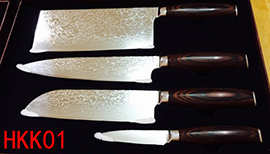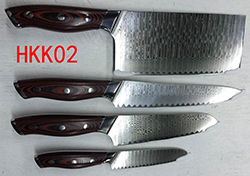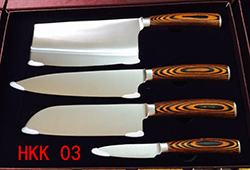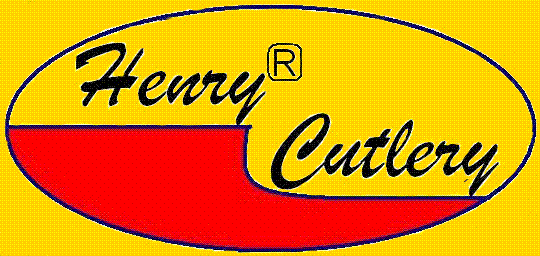Current position:HOME > Chef knife
| In cooking, a chef's knife, also known as a cook's knife, is a cutting tool used in food preparation. The chef's knife was originally designed primarily to slice and disjoint large cuts of beef. Today it is the primary general-utility knife for most western cooks. A chef's knife generally has a blade eight inches (20 centimeters) in length and 1 1⁄2 inches (3.8 cm) in width, although individual models range from 6 to 14 inches (15 to 36 centimetres) in length. There are two common types of blade shape in western chef's knives, French and German. German-style knives are more deeply and continuously curved along the whole cutting edge; the French style has an edge that is straighter until the end and then curves up to the tip. Neither style is inherently superior; personal preference will dictate the choice. A Japanese gyuto (牛刀 ぎゅうとう), gyūtō), literally meaning 'beef knife', is the Japanese version of a French (aka Western) chef's knife. The Santoku Knife is basically a Japanese style chef's knife. It's smaller lighter sharper with a different blade shape. The Chinese chef's knife is completely different and resembles a cleaver. A modern chef's knife is a multi-purpose knife designed to perform well at many differing kitchen tasks, rather than excelling at any one in particular. It can be used for mincing, slicing, and chopping vegetables, slicing meat, and disjointing large cuts. In order to improve the chef's knife's multi-purpose abilities, we employ differential sharpening along the length of the blade. The fine tip, used for precision work such as mincing, might be ground with a very sharp, acute cutting bevel;the midsection or belly of the blade receives a moderately sharp edge for general cutting, chopping and slicing, while the heavy heel or back of the cutting edge is given a strong, thick edge for such heavy-duty tasks as disjointing beef. |
   |










